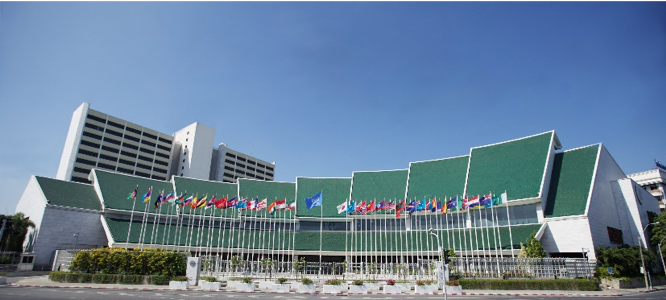Asia’s Energy Transition: 3 takeaways from the Asia Pacific Climate Week 2019
by -
The Asia Pacific region, which includes India and China, constitutes 60% of the global population and has contributed to nearly half of the global annual CO2 emissions in 2017. It is also the fastest growing region in the world economy, expected to account for 60% of the world’s growth in energy demand between now and 2040. Perspectives, progress and challenges from the Asia Pacific thus have a significant bearing on international deliberations, effective climate action and larger global impacts.
The Asia Pacific Climate Week (APCW) was aimed at advancing regional climate action and providing inputs at the upcoming Climate Action Summit, to be convened by the UN Secretary-General in New York (September 21-23) and the UN Climate Change Conference in December. The week brought together leaders from countries in the region, along with the private sector, local and national governments, and participants from youth and civil society organizations. As one of the leaders in the global low-carbon transition, and given India’s shared regional context with the Asia Pacific countries, the APCW was a key platform to share the Indian experience and learn about innovative measures and challenges from other countries in the region.
 The Asia Pacific Climate Week 2019, took place from the 2nd to 6th of September 2019, in Bangkok, Thailand, with more than 1700 participants from 59+ countries. (Source: UNFCCC/Flickr)
The Asia Pacific Climate Week 2019, took place from the 2nd to 6th of September 2019, in Bangkok, Thailand, with more than 1700 participants from 59+ countries. (Source: UNFCCC/Flickr)
Energy is recognized as one of the six key economic sectors that can help bridge the emissions gap in 2030. Energy is also one of the nine interdependent tracks or action portfolios under the 2019 UN Climate Action Summit to maximize the impact of the transformation.
On September 5th, WRI was a supporting partner for the Thematic Block on Energy Transitions, led by ASIA LEDS Partnership and other supporting partners including IEA, IRENA, REN21, UNDP, UNESCAP, WBCSD, and UN Environment. The discussions showcased policy efforts of Asian and Pacific countries in building low-carbon energy systems and financing mechanisms for scaling up investments supporting the energy transition. A range of sessions and side events at the climate week discussed the ways in which a sustainable energy transition can aid global climate action and build resilience. The three key takeaways include:
Innovation for accelerating the low-carbon transition: With decreasing RE costs, the Asia Pacific region is already undergoing an energy transition. Asia alone contributed to 61% of the global renewable energy (RE) capacity addition in 2018. Going forward, technology, policy and financing innovations are key to scaling up RE deployment. Some of the examples discussed included the deployment of off-grid and micro-grid solutions in countries like Papua New Guinea; grid upgradation and management in India; and emerging applications such as utility scale floating PV in land-constrained countries like Singapore. Additionally, de-risking of markets and implementing financing mechanisms can also incentivize RE scale up. Examples included tariff setting, subsidy reforms as well as implementing financial instruments such as blended finance, corporate procurement, demand aggregation and the use of blockchain technology to facilitate energy markets.
Ensuring an equitable transition: A sustainable and just transition to a low-carbon economy can be ensured through due consideration of local developmental priorities, and the socioeconomic impacts of RE deployment. RE is expected to create 2.5 million new jobs worldwide, which would offset 400,000 jobs lost in fossil fuel-based electricity generation. However, the impacts of job losses and potential skill gaps are localized and remain under-researched. Managing these negative impacts with supporting policies at the local level is critical to ensuring a just transition. The speakers also highlighted the compelling social and economic reasons to rapidly shift to low-carbon and resilient infrastructure. A sustainable low-carbon transition would support the Paris Agreement as well as progress on the Sustainable Development Goals.
Role of Non-state and Subnational Actors: The APCW underscored the need for greater engagement across subnational as well as non-state actors for an enhanced and accelerated low-carbon transition. Identifying, supporting and leveraging the increasing voluntary action from businesses in Asia, such as carbon pricing and science-based targets, can foster more ambitious climate action. A recent WRI paper provides some examples from Asia and highlights the need for improved data sharing and building upon the feedback cycle between the government and private sector to strengthen climate action. Engaging actively and meaningfully with non-state and subnational actors can be brought about by holistic planning and implementation approaches. These may include regional trade and cooperation, supporting newer approaches and voluntary initiatives by subnational regions, cities and businesses, and strengthening reporting systems and data sharing.
India is witnessing an energy transition with 81 GW of RE already installed and a target of 175 GW by 2022. However, increasing RE also demands improved policies, planning, technology and management of RE integration in the grid. The discussions at APCW are significant, especially in light of India’s reaffirmed commitment to develop long-term strategies for a low-carbon emissions pathway, and to update its Nationally Determined Contributions by 2020, as per the Paris Agreement. The commitments and strategies from India and the broader Asia Pacific region have the potential to provide impetus for a strong outcome at the UNSG Summit and the UN Climate Change Conference later in the year.


